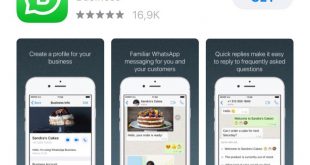
For the third article in this series, I will talk about the strategic presence in the second most popular social network in the world: Twitter. Although Twitter is far from achieving the 1 billion active users Facebook says it has, they currently have a respectful 300 million users worldwide. This is a big audience anyway you look at it and here you will find many possibilities for your company and brands.
In order to achieve success in Twitter, you have to analyze the main characteristics and limitations this network has to offer. Then, by understanding these items, you’ll be able to create your own strategy for Twitter. The first thing to keep in mind, is that unlike Facebook that can be labeled as a “general social network” for everybody, allowing you to post texts, videos, pictures and more, Twitter was design to deliver a maximum of 140 characters at a time. This is very important, as this restriction starts to define the audience you will be reaching.
There are several generations that are adapted to these short texts that are also used in SMS and some mobile chat platforms. I’m talking mainly about kids and teenagers. In fact, in many countries is not strange to see that teens and kids use Twitter as their preferred platform to communicate, over email and other technologies.
However, Twitter is not just for kids and teens, in fact you’ll find an ample demographic group, including people from all ages. Just keep in mind that these 140-character limit can be an obstacle for you target users and because of this, Twitter might not be the best channel for your communications online.
If you decide to work around the 140-character limit, you must understand what this really means. Maybe some brands and companies are not confortable with this characteristic and can have a better time somewhere else. Also if Twitter is your objective, please understand what this means. This social network will expose you to users, their criticism and much more. In this case be proactive and smart, and you can change a problem into a solution. Users want to hear straight answers and real responses and the promise that the company is going to address his or her concerns. I’ve seen several companies acting humble and answering users concerns, resulting in new clients and better relations with their current clients.
One last aspect I want you to analyze is the importance of Twitter’s Trends. This is a function where Twitter shows what people are talking about the most, organized by countries and cities. For example, part of your strategy could be to use these topics in order to acquire new followers. This is a great strategy, but use caution. For example, if one of the tending topics talks about a tragedy or death, maybe it’s wise to leave the topic alone. But in other less important subjects this can lead to great results.
So that is it for Twitter. This is just an introduction, but keep posted as in the next article of this series I will talk about YouTube, the largest video site on the Internet.
Image taken from Flickr.com
 An Entrepreneur Blog Management, Strategy, Internet, Technology, Social Networks, Organizational Change and more!
An Entrepreneur Blog Management, Strategy, Internet, Technology, Social Networks, Organizational Change and more!



